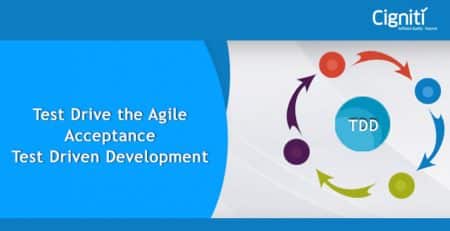6 Steps to Successfully Transition to an Agile QA
Agile methodology is increasingly finding its place in software projects across the world. Statistics show 88% of businesses have adopted agile methodology, yet only 38% are using agile for more than 75% of their projects. This indicates that companies are still struggling with the end to end transformation to agile. This struggle is more evident in QA teams than in development teams. Many projects have an agile development model while still retaining traditional QA for testing.
The two key reasons for failure in establishing an agile QA are resistance to change and faulty adoption techniques. Here are a few tips that can help in making a successful transition from traditional QA to an agile QA:
- Agile Awareness
The first and foremost step in turning agile is unlearning what has been learnt in years of traditional testing. The QA team needs to shed traditional mindset like
a) Goal of QA is to detect bugs
b) Testing cannot be managed without a separate test strategy and test plan
c) Automation is required only for regression
The entire project team needs to accept that:
a) QA is not separate from the development team
b) Quality is not the sole responsibility of QA
c) Documentation in development and testing needs to be kept at a minimum
- Agile Training
Training the team in agile methodology helps them to understand and be more receptive to the changes. A well-designed training plan containing initial awareness sessions, followed by targeted training for managers, developers and testers needs to be implemented before the roll-out.
- Choosing a low-risk approach
While making the transition to agile, it is best to avoid doing a 100% roll-out. Instead, companies can make an incremental transition by selecting a few pilot projects to run in agile mode. This helps to build agile competency in a sustained manner and lowers the risk of transition. Engaging an agile consultant or coach helps in achieving a smooth roll-out.
- Redefining processes and team roles
The roles in an agile QA are different from that in a traditional QA. Define agile processes and roles at the beginning of the roll-out. Traditional management style of command and control needs to change to leadership and collaboration. Developers and testers should receive more autonomy along with more responsibilities. Test managers ideally should become scrum managers who are responsible for ensuring collaboration between teams and elimination of issues.
- Upgrading QA skillset
In an agile project, QA members are expected to be technically competent to write small pieces of code to access underlying business logic and create automation suites. They should be able to understand the code and suggest improvements from a performance aspect. Hence, sufficient cross-training should be given before the transition to make QA resources technically adept.
- Automating test processes
A key feature of an agile QA is automation in testing, build and deployment. Developers need to assist testers wherever possible in setting up automation or in conducting exploratory testing until considerable automation is achieved.
Transitioning to agile requires a cultural change and can be very challenging. Cigniti’s SMART tools can aid and assist you in your agile journey. Our expertise in executing agile projects can help you achieve a smooth transition to an agile QA. Know more





Leave a Reply